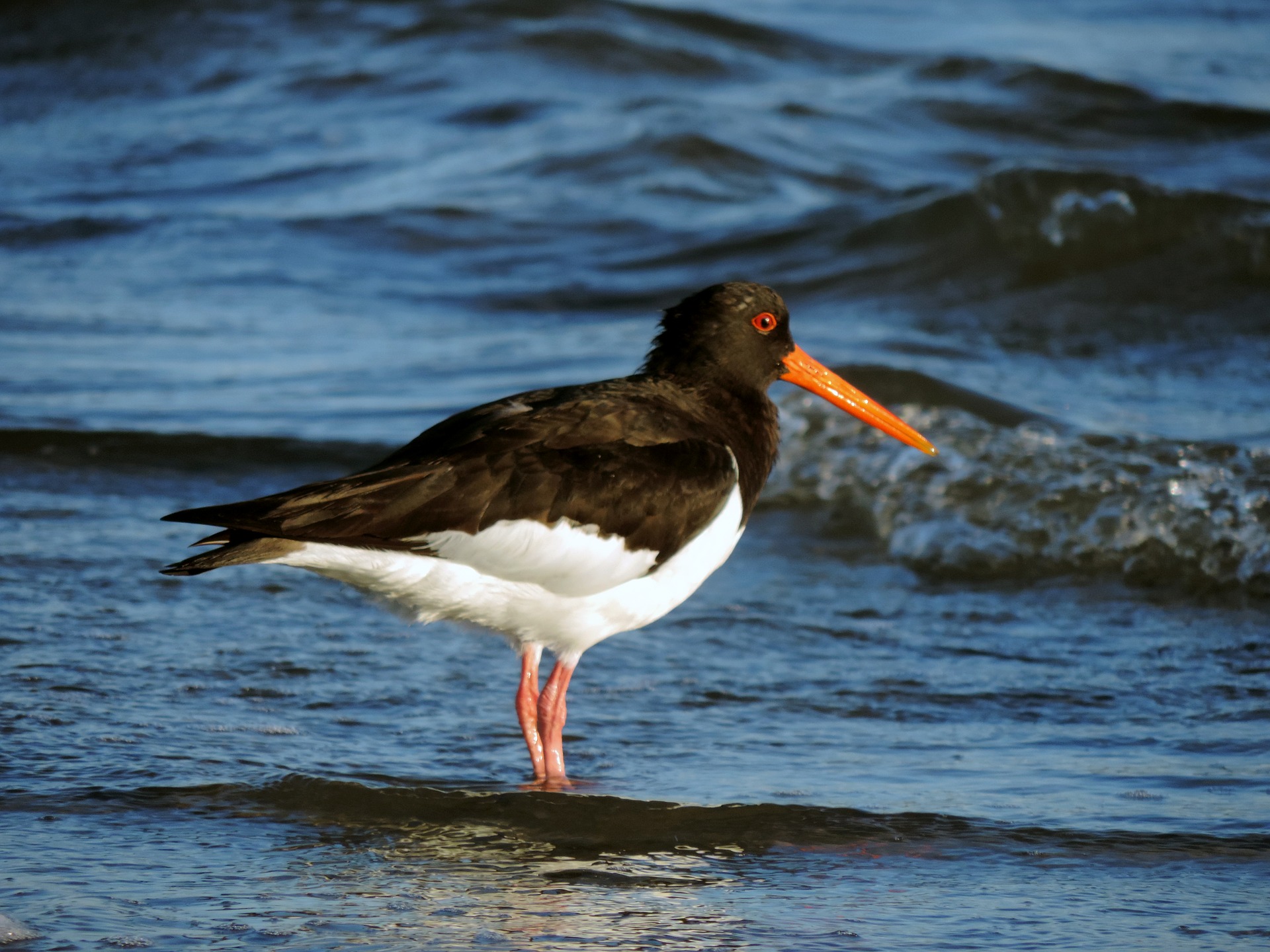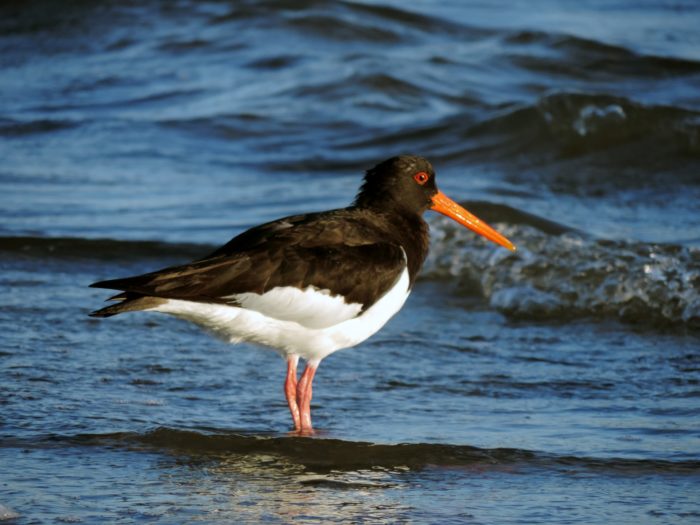
Sea Wonder: Black Oystercatcher

Photo credit: Mona El Falaky
Appearance
Black oystercatchers are seabirds that are midnight black in color with striking orange beaks, bright orange eye rings, and light pink legs. When fully grown, they can be between 16.5 to 18.5 inches in height and can weigh two to three pounds. Their wingspan is between 28 and 36 inches.
Diet & Habitat
Black oystercatchers inhabit rocky areas on islands and the coast along the Pacific coast, including Washington State (including in Olympic Coast National Marine Sanctuary), Alaska, and Oregon, and as far south as Baja California Sur in Mexico. Unlike many other species of seabirds, they rarely venture far from home – even during the winter months.
They forage in shallow waters for mollusks and shellfish like mussels, worms, limpets, crabs, barnacles, and clams. Contrary to their name, they only feed on oysters occasionally. To feed, they use their beak to stab their prey’s shell or pry them from the rocks. Sometimes oystercatchers will use their beaks to probe in the sand for animals that burrow.
Life History
This bird is a shining example of a homebody! Black oystercatcher chicks are usually raised in the same area their parents grew up in and these birds generally mate for life, re-using the same nest annually.
Breeding season usually occurs in May and June and is characterized by territorial behavior and conflict among birds. They nest just above the high tide line anywhere from bare rock to tufts of grass and logs. Most nests are shallow, but some are more built up. Females will lay egg clutches of around two or three and chicks receive continuous care from their parents for the first few days of life. After that, young oystercatcher chicks will accompany their parents to the intertidal zone.
Since they tend to stay close to home, their preferred method of travel is walking among rocks and gravel, and they travel in pairs or small groups. During the breeding season, they will aggregate in groups of 100 animals or more, separated by nests.
Threats & Conservation
Just like other seabirds, plastic pollution, human disturbances, ocean acidification (which negatively affects the animals on which they prey), and warming ocean waters are a threat to black oystercatchers. We can do our part to help preserve these wondrous animals by reducing our use of plastics, recycling, participating in beach cleanups, and supporting policies that address ocean acidification and other habitat conservation issues.
